Top 10 Alpaca Breeds for Superior Fiber Quality
If you’re seeking top alpaca breeds for superior fiber quality, focus on Huacaya and Suri—the most popular with soft, durable fleece. Royal Alpacas offer ultra-fine, luxurious fibers under 20 microns, while Baby Alpaca fibers provide softness ideal for close-to-skin wear. Superfine Alpacas balance softness and strength, perfect for varied uses. Genetic lines and regional breeds enhance these traits further. Explore more to discover how these breeds excel in fiber fineness, durability, and textile potential.
Key Takeaways
- Huacaya alpacas produce dense, crimpy, and durable fiber, making up 90% of the population and favored for soft, versatile textiles.
- Suri alpacas yield silky, lustrous locks prized for luxury fashion textiles and fine, smooth fiber quality.
- Royal alpaca produces ultra-fine fiber under 20 microns, offering exceptional softness comparable to silk and vicuña.
- Baby alpaca fiber ranges 20-22.5 microns, providing warm, lightweight, and durable fiber ideal for premium garments.
- Superfine alpaca fiber (22.5-26 microns) balances softness and durability, mostly from Huacaya, suitable for versatile textile applications.
Huacaya Alpaca
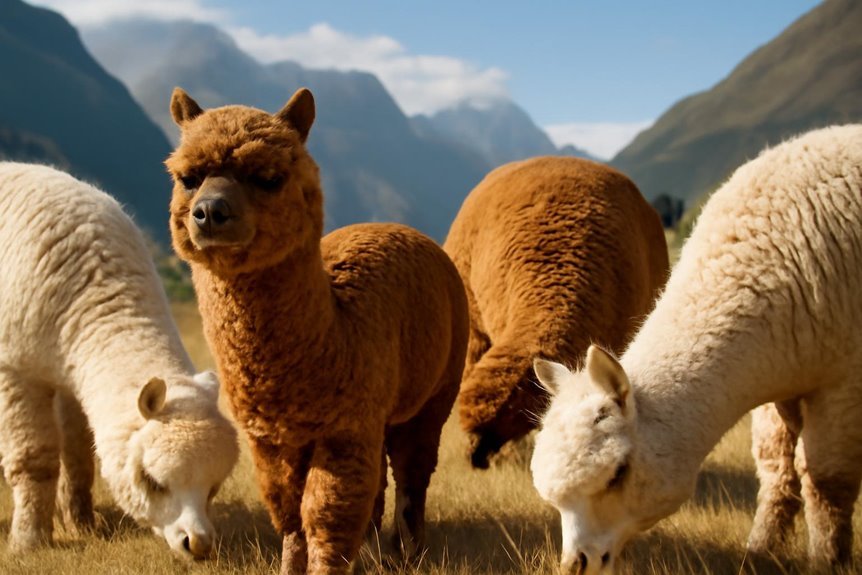
If you’re new to alpacas, you’ll likely encounter the Huacaya first, as they make up about 90% of the global population. Known for their dense, crimpy fleece, Huacaya alpacas produce a soft, springy fiber that looks like a plush teddy bear. Their alpaca fiber is prized for its rich texture and consistency, making it perfect for cozy socks, sweaters, and fine garments. Adult Huacayas weigh between 100 to 175 pounds and yield 5 to 10 pounds of high-quality fleece annually. Unlike wool, this fiber is lanolin-free and hypoallergenic, which is a bonus if you have sensitive skin. If you’re interested in fiber arts, you’ll appreciate how Huacaya alpaca fleece is easy to work with, favored by spinners and textile artists alike.
Suri Alpaca
Suri alpacas make up just 10–15% of the global alpaca population, but their luxurious fleece sets them apart. You’ll notice their distinctive fleece forms silky, lustrous locks that look like ringlets or dreadlocks. This unique texture isn’t just beautiful—it’s highly prized in luxury textiles.
Here’s what makes Suri fleece so special:
- Exceptional fineness and smoothness for a silky fiber feel
- Natural sheen that adds a cool, slippery touch to garments
- Preferred by designers for high-end fashion and textiles
- A rare breed with increasing demand among fiber artists
If you want superior fiber quality with a unique silky texture, Suri alpacas are an excellent choice.
Royal Alpaca Breed Characteristics
Only a small fraction of alpacas produce the rare and ultra-fine royal alpaca fiber, which measures under 20 microns in diameter. If you’re seeking the finest type of alpaca fleece, the royal alpaca stands out for its exceptional softness and silky texture, rivaling luxury materials like silk and vicuña. This breed’s fleece offers a gentle touch against the skin, delivering unmatched comfort and warmth. Because of its exclusivity and superior quality, royal alpaca fiber is highly coveted by fashion designers and fiber artists who want to create high-end luxury garments. When you choose royal alpaca, you’re selecting a rare breed prized not only for its exquisite fiber but also for its ability to elevate wearable fashion to an unparalleled level of elegance and refinement.
Baby Alpaca Breed Traits

Baby alpaca fiber is prized for its exceptional softness and fine quality, measuring between 20 and 22.5 microns in diameter. When you choose baby alpaca, you’re selecting one of the softest fibers available, perfect for garments that feel gentle against your skin. Here’s what you should know about baby alpaca breed traits:
- The term “baby alpaca” refers to fiber fineness, not the animal’s age.
- This fiber offers a warmth-to-weight ratio that keeps you cozy without bulk.
- Baby alpaca fiber is durable, making your clothes long-lasting.
- Its luxurious texture is favored by designers seeking premium materials.
Superfine Alpaca Fiber Producers
While superfine alpaca fiber ranges between 22.5 and 26 microns, producers often focus on breeding Huacaya alpacas to achieve the ideal balance of softness and durability. Huacaya’s dense, crimpy fleece delivers the springy texture that makes superfine alpaca fibers perfect for scarves, gloves, and knitwear. You’ll find that Suri alpacas, known for their silky fleece, can also produce superfine fibers, though they’re less common in this category. If you’re aiming for consistent quality, regular testing with Optical Fibre Diameter Analyser (OFDA) technology guarantees the fiber maintains its grade. Superfine alpaca is prized not just for luxury but also for moisture-wicking and hypoallergenic properties, making it a top choice for fashion that values both comfort and performance.
Rare and Elite Alpaca Varieties
You’ll appreciate how rare Suri alpacas are, making up just 10–15% of the population with their silky, lustrous fleece prized by designers. Then there’s Royal Alpaca, the ultimate luxury fiber, softer than silk and perfect for exclusive garments. Understanding these elite varieties helps you see why their fiber commands such prestige.
Unique Characteristics of Suri
Although Suri alpacas make up only about 10–15% of the global population, their fleece stands out for its rarity and luxury appeal. You’ll notice the exceptional fineness and quality of Suri alpacas’ fiber, prized for high-end textiles. Here’s what makes Suri fleece unique:
- Lustrous, silky locks that resemble ringlets or dreadlocks.
- A smooth, cool, and slippery texture unlike the fluffier Huacaya fleece.
- Less volume but a sleek, elegant profile.
- Natural sheen and softness perfect for luxury garments.
When you choose Suri fiber, you’re selecting a rare, elite material that designers and fiber artists highly value for its distinct look and superior feel.
Prestige of Royal Alpaca
If you’ve ever wondered what sets the most exclusive alpaca fibers apart, royal alpaca is the answer. Royal alpaca fiber is the rarest and finest, with strands measuring under 20 microns, making it ultra-soft and silky—comparable to silk and vicuña. This elite fiber carries immense prestige, reserved for high-end luxury garments that demand both comfort and exclusivity. Because only a small number of alpacas meet the strict micron criteria, production is limited, enhancing its market value. When you choose royal alpaca fiber, you’re embracing the pinnacle of alpaca quality sought by discerning consumers, fashion designers, and fiber artists. Its unmatched softness and rarity make royal alpaca the ultimate symbol of luxury in the world of alpaca textiles.
Regional Alpaca Breeds With Fine Fiber
When you explore regional alpaca breeds, you’ll find that fiber quality varies greatly, with Peruvian alpacas often leading the way in producing some of the finest fleece grades. Their alpaca wool is prized for its exceptional fineness and quality. Here’s what sets regional breeds apart:
- Peruvian Alpacas – Known for Ultra Baby Alpaca wool, offering unmatched softness and warmth.
- Huacaya Breed – Dominates with dense, springy fiber, ideal for versatile, high-quality textiles.
- Suri Breed – Produces lustrous, silky locks valued for luxury fashion items.
- Environmental Impact – Sustainable grazing enhances fiber health and quality.
Understanding these regional differences helps you appreciate the unique fineness and quality that each alpaca breed brings to the textile industry.
Genetic Lines Known for Softness
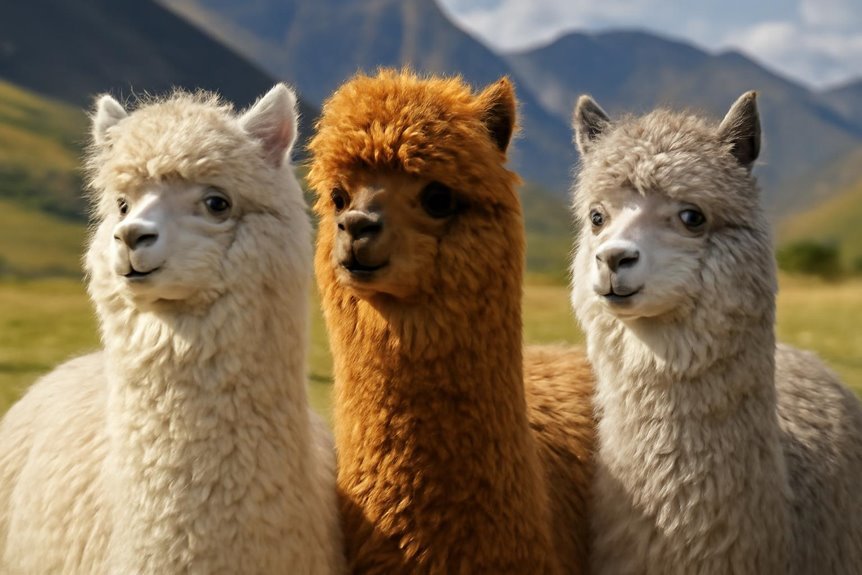
When you look at alpacas, you’ll notice certain genetic lines are prized for their incredible softness. Breeders focus on traits that enhance fineness and silky texture, especially in renowned fiber-producing lines like Suri and Huacaya. Understanding these genetics helps you appreciate why some alpaca fleece feels ultra-luxurious.
Softness-Enhancing Genetic Traits
Although many factors influence alpaca fiber quality, certain genetic lines are renowned for producing exceptionally soft fleece that you’ll appreciate for garments worn close to the skin. These softness-enhancing genetic traits are key to obtaining fine, luxurious alpaca fibers. To help you understand what to look for, consider these factors:
- Fineness of fleece, typically between 20 and 22.5 microns, common in Huacaya lines.
- Crimp structure, affecting softness and elasticity.
- Overall fleece density, contributing to a plush feel.
- Genetic lineage verified through testing to guarantee softness traits are passed on.
Renowned Fiber-Producing Lines
Two primary alpaca breeds dominate the fiber market, each offering unique softness qualities you’ll want to contemplate. Suri alpacas, though only 10-15% of the population, stand out with their silky, ringlet fleece prized for exceptional fineness and sheen. Their fiber quality often boasts micron counts below 20, placing them in the royal alpaca category—the softest and most luxurious. On the other hand, Huacaya alpacas make up about 90% of alpacas, known for their dense, crimped fleece that’s soft and springy. Within both breeds, specific genetic lines have been developed through selective breeding to enhance softness, consistency, and durability. When you’re seeking superior fiber quality, these renowned lines deliver the finest softness and reliability for top-tier textile production.
Breeding for Fineness
Selecting alpacas from specific genetic lines is key if you want the softest fleece possible. Breeding for fineness focuses on lowering fiber diameter, avoiding a high micron count that reduces softness. Here’s what you should know:
- Suri alpacas, though just 10–15% of the population, are prized for their silky, fine fleece ideal for luxury textiles.
- Huacaya alpacas make up most of the herd and offer dense, crimped fleece that balances softness and warmth.
- Breeders use tools like the Optical Fiber Diameter Analyser (OFDA) to measure fiber fineness precisely.
- Selecting royal alpaca (under 20 microns) and baby alpaca (20-22.5 microns) genetic lines guarantees you get premium softness.
Breeds With Exceptional Fiber Durability
When you’re looking for alpaca breeds with exceptional fiber durability, Huacaya and Suri stand out. Huacaya alpacas, which make up about 90% of the population, have dense, crimpy fleece that offers excellent durability and insulation. This makes their alpaca fibers perfect for cozy socks and durable outerwear. On the other hand, Suri alpacas produce a silky, fine fleece prized for luxury textiles with a unique drape and remarkable durability. Both breeds’ fibers boast strong tensile properties, so garments made from them maintain shape and comfort over time. Plus, alpaca fibers contain no lanolin, making them less prone to environmental damage. The crimp structure in Huacaya fleece especially enhances durability by reducing pilling, ensuring long-lasting warmth and appearance in your garments.
Alpacas With Superior Micron Count
Although fiber durability is essential, the softness and fineness of alpaca fleece often matter most if you’re aiming for luxury and comfort. Alpacas with a higher micron count typically offer different balances of softness and strength, influencing their use in textiles. Here’s what you should know:
- Royal Alpaca fibers have a micron count under 20, making them the softest and ideal for premium garments.
- Baby Alpaca ranges from 20 to 22.5 microns, comparable to cashmere for close-to-skin wear.
- Superfine Alpaca fibers fall between 22.5 and 26 microns, balancing softness with durability.
- Suri alpacas produce finer, shinier fleece but less volume than Huacaya, affecting luxury fabric availability.
Choosing alpacas based on micron count guarantees you get the perfect blend of softness and quality.
Frequently Asked Questions
What Is the Best Alpaca Fiber?
Imagine silk threads woven by dawn’s gentle light—that’s the Royal Alpaca fiber you want. With advanced breeding techniques and careful fiber processing, you’ll get ultra-soft, luxurious fleece under 20 microns, perfect for exquisite, durable garments close to your skin.
What Is the Best Type of Alpaca?
When choosing the best type of alpaca, you’ll want to evaluate alpaca characteristics like fiber quality and alpaca temperament, since some breeds are gentler and produce softer fleece, making them easier to handle and more valuable.
What Is the Most Desirable Alpaca Color?
Did you know alpacas have 22 natural colors? With alpaca color genetics influencing this variety, true black is the most desirable due to color market demand, making it highly sought after for luxury and exclusivity in fiber products.
What Is the Softest Alpaca Breed?
If you’re comparing softness, you’ll find the Suri alpaca stands out with its superior fiber grades. Its fleece is silkier and finer than others, making it the softest breed in any softness comparison you do.

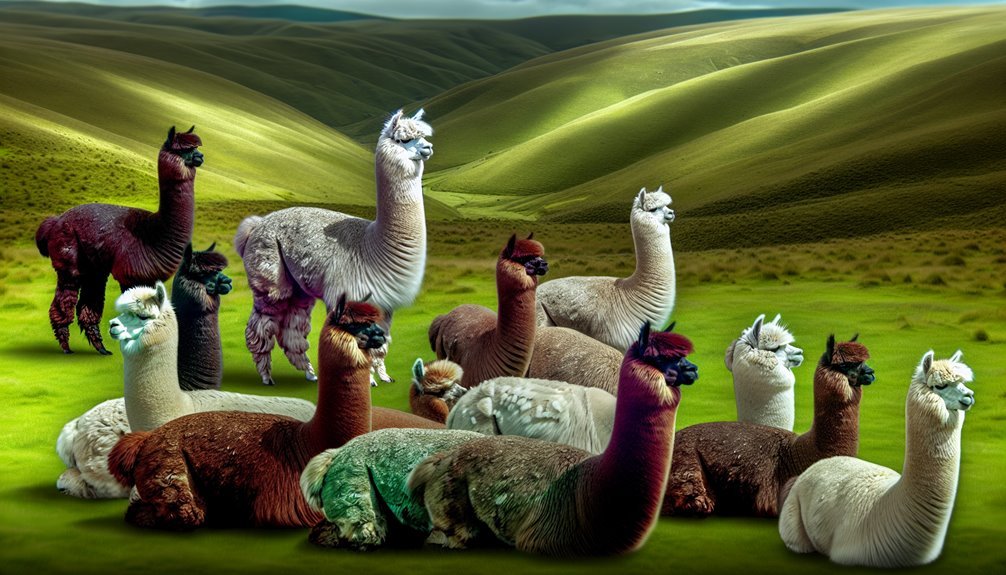

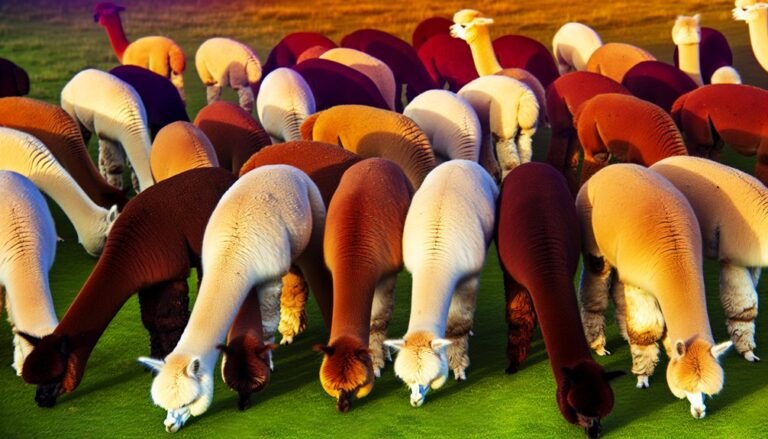
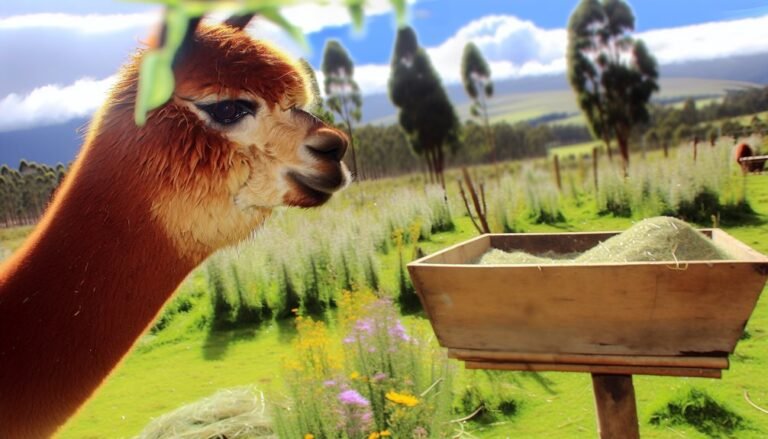

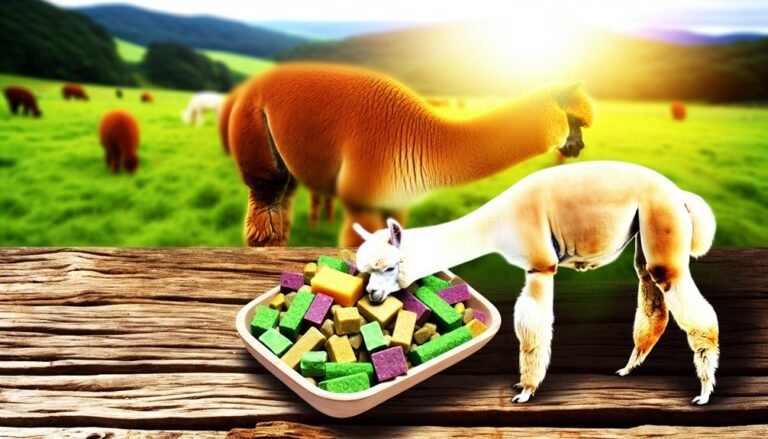
Our picks
Alpaca & Wool Felted Sole Inserts: Comfy Upgrade?
Best Alpaca Socks for Hiking: Ultimate Comfort and Durability on Trails
Best Alpaca Halter for Comfort and Control